What is the difference between arthritis and osteoarthritis?
Many people confuse names because they do not know the difference.
These diseases are characterized by joint damage, but there is a significant difference between them.
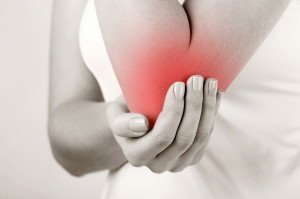
What is the difference
Arthritis can affect any joint. In many cases, this disease is a consequence of arthritic lesions. This is one of the consequences of improper, premature treatment of osteoarthritis.
For a more accurate understanding of both diseases, the differences are specific to each:
- Arthritis refers to various inflammatory changes in the joints;
- A more accurate name for the second disease is osteoarthritis. Differs in that the lesion affects the cartilage tissue.
The mechanism of progression of 2 diseases
Arthritis - classification of varieties
Arthritis is the name of a specific group of joint diseases.
Characterized by the manifestation of swelling, inflammation. The inflammatory process leads to the production of enzymes that have a detrimental effect on the joints, and eventually destroy it. In addition to inflammation, a sticky substance appears in the node itself - fibrin.
This is pain at rest and can be relieved with exercise. Getting out of bed in the morning, a person feels unstable, in order to remove this feeling he needs to disperse. Most often, the disease affects the upper and lower extremities.
There is a division of the disease: degenerative or inflammatory. This classification is based on the nature of the disease.
A disease in which articular cartilage affects is called degenerative arthritis. Cartilage is used to connect and move bones.
There are several types of it:
- Osteoarthritis;
- Traumatic arthritis.
The inflammatory course of the disease is characterized by damage not to cartilage but to connective tissue. Inflammation occurs in the inner space of the joint capsule.
Divide it into the following types:
- Caused by infection;
- Rheumatic;
- Reactive plans;
- Ground floor.
To understand the difference between arthritis and osteoarthritis, it is necessary to determine how osteoarthritis is not similar to the other diseases involved in the concept of arthritis.
Stages of osteoarthritis progression Osteoarthritis, but more accurately and more accurately it will be called osteoarthritis, this is a chronic joint damage, which deforms it over time. The main cause of deformity is irreversible damage to cartilage tissue.Osteoarthritis is a disease in which there is a mechanical erosion of the cartilage in the joint until it disappears completely. The bones are exposed, and their friction already occurs.The specification of the disease is that destructive processes affect cartilaginous tissues, followed by a violation of their integrity.
The disease is long-term, chronic.
There are 2 stages of its development:
- Primary, detected in 42% of patients. It does not arise due to joint damage, but due to unbearable physical exertion or hard work. Men who have been engaged in physical labor for a long period are sick with it.
- Secondary, develops in more patients than in the primary stage and is associated with the consequences of trauma, based on which the mechanism of destructive processes is caused.
Causes and Differences
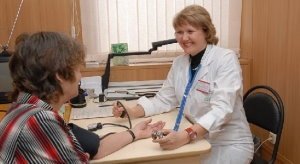
Causes of Arthritis
The main preconditions of the disease can be listed:
- Excessive exercise or work;
- Various infectious processes, including latent ones;
- Any type of allergic reaction;
- Permanent damage to the same node;
- Disruptions in metabolism;
- Lack of vitamins;
- Immune system disorders;
- post-traumatic syndrome;
- Hereditary predisposition.
Root causes and main signs of osteoarthritis
The background of this disease is not well understood. Only people of retirement age are sick. The disease is influenced by the characteristics of age.
Trauma is considered another version of osteoarthritis. The joint with it must be treated. If this does not happen, then after a few years signs of osteoarthritis damage appear.
Clinical presentation and changes in symptoms
Let us return to a more detailed examination of the symptoms that accompany joint disease.
Symptom of pain. Arthrosis in the initial stage is not characterized by a strong persistent manifestation of pain. Appears only with intense strain or joint movement. When the load is reduced or the movement stops, the pain goes away.
The person does not pay attention to such manifestations, allowing the symptoms to increase and the disease to progress.Pain begins to appear even with slight strain. Reduces if a person adopts a comfortable posture.
Systematic aching pain occurs in the affected joint area. This can be accompanied by long walks, physical exercises or physical activity.
Sometimes grief is felt after a long period of rest of the affected wrist. If it is arthritis, then the grief appears both at rest and during physical activity.
This disease afflicts a person in the prenatal hours. Severe pain occurs between 3 and 5 o'clock in the morning.
Crocodile sound. Dry chewing is associated with osteoarthritis. As cartilage tissue breaks down, bone friction begins. The sound thickens and intensifies, manifesting itself in the slightest movement of the diseased joint.
Demonstrate movement rigidity. Arthritis strongly restricts the movement of the two joints affected by it, and there is a decrease in the overall mobility of the entire skeleton.
Disorder of the shape of the diseased node. Both arthritis and osteoarthritis can deform an articulation. But the deformation process itself occurs in different ways. With osteoarthritis, there is no redness or inflammation. The connection is not hot to the touch. Deformation is also called cold. Swelling may be expressed at the time of disease exacerbation, accompanied by excruciating pain. 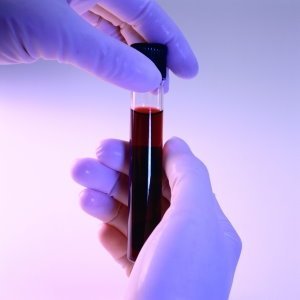 Arthritis changes the joint, heats up, redness and swelling appear. The pain is acute, occurs on palpation of the affected area, nodular formations can be palpated.
Arthritis changes the joint, heats up, redness and swelling appear. The pain is acute, occurs on palpation of the affected area, nodular formations can be palpated.
What the blood test will tell you. Blood counts for osteoarthritis do not change. An increase in leukocyte count and a sharp rise in ESR are signs of inflammation observed in arthritis. Increased leukocytosis indicates that the body is susceptible to infection and inflammation occurs internally.
In the biochemical blood test for arthritis, there is an increased number of markers of inflammation, and in osteoarthritis they do not change significantly.
Location of pathology. Osteoarthritis affects the large joints of the body. These will be the knees, hip joints and spine. The names of the disease come from this: gonarthrosis (damage to the knee joint), coxarthrosis (affecting the hip joint), spondyloarthritis (pathology localized in the spine).
Arthritis, called rheumatoid arthritis, lack of movement (poor) in the morning - one of the signs of rheumatoid arthritis. Upon awakening, a person feels stiffness in the hand area. The ankle joints are affected both one after the other and both at the same time. With rheumatoid or psoriatic arthritis, there may be signs of inflammation in the finger joints - swelling (swelling) and redness.
There are a number of other signs you may know about arthritis.
If a finger on the upper or lower extremity swells and turns red, arthritis may be suspected. Arthritis manifests as severe pain in the knees and ankle. Pain can also occur in the big toes.
Goes along with swelling and redness of the wrist. Pain symptoms occur regularly, suddenly increase, and then disappear. Arthritis of infectious origin is accompanied by an increased body temperature, general fatigue, a person sweats, tremors, all bones ache and ache.
Inflammatory processes affecting the joints have a negative effect on important internal organs, heart, kidneys and liver.
Additional signs of osteoarthritis:
- Aseptic necrotic areas;
- Strong muscle tension;
- Partial immobilization of affected joints;
- Slow resorption of cartilage, bone tissue and friction between them;
- Inflammatory processes in the areas of tissue surrounding the painful joint.
Influence of patient gender and age on the presence of joint disease
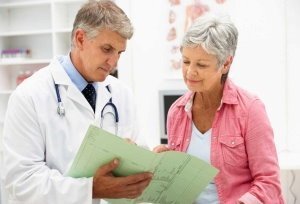
Who is affected by arthritis
The percentage of arthritis cases is low and reaches 2% of the entire population in the world.
Women "35-50 years old" are more sensitive to it.
Small nodes are affected more often.
Who gets the disease
Osteoarthritis does not spare the elderly, whether it is a woman or a man. Retirees suffer from the disease after retirement. The total number of cases is about 20% of all the inhabitants of the Earth.Different diseases - different methods
Specialists in charge of treatment are called orthopedic trauma surgeons. Arthritis requires treatment by various specialists.
Arthrosis and how to deal with it
Painful sensations are relieved for a short time with the help of anti-inflammatory drugs. But they have no effect on the course of the disease.
The main purpose of treatment is to regenerate cartilage tissue. The main drugs that help to do this are chondroprotectors.
With the help of these medicines, it is possible to cope with inflammation of the joints, regulate muscle metabolism and restore damaged areas.
If conservative treatment does not provide positive dynamics, arthroplasty may be used.
Its essence lies in the fact that surgery is performed to replace the diseased node. Osteoarthritis is a serious and incurable disease because the ongoing processes are irreversible.
The patient should follow the doctor's recommendations for proper nutrition and remedial gymnastics - this is a mandatory phase of treatment. Gymnastics, medication, therapeutic measures - all this leads to a positive effect.
What medications and prescriptions does the doctor give the patient?
For uncomplicated conditions, the recipes will be as follows:
- Hormone therapy;
- Medications aimed at relieving inflammation;
- Pain reliever;
- Manual therapy, massage sessions;
- Set of exercises;
- Physiotherapy - the use of ultrasonic waves and the use of thermal methods.
The complex course of the disease will require additional medication. Sometimes doctors insist on removing the problem surgically.
Who needs the services of a surgeon? Patients with a completely destroyed joint that cannot be repaired need a complete replacement. Depending on the degree of joint destruction, full and partial replacement is used.
Treatment for arthritis
It all depends on the form the disease has taken. The methods of therapy will be different, they can be combined, changed, choosing the one that will give the desired result in the treatment.
Living Recommendations:
- Proper nutrition,
- Avoiding alcoholic beverages
- Decreased physical activity.
Antibiotics are prescribed by medicine and anti-inflammatory drugs are injected into the joint.
Moderate gymnastics and physical therapy are helpful in treatment.
The main thing in treatment is to remove the inflammatory process and improve the body's resistance. They use vitamin preparations, diet food. It includes seafood, dairy and poultry.
Arthritis is a direct contraindication to sunbathing. Wearing high-heeled shoes can worsen the course of the disease, exclude it from your wardrobe.
Illness imposes its own prohibitions: alcohol, hard physical work must become part of the past. Health is too expensive to disregard the recommendations of doctors!
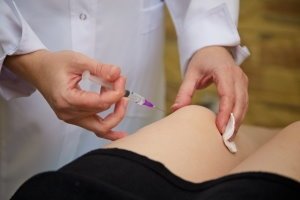
Predicted disease outcomes
Diseases vary in their possible outcomes.
Arthritis is completely curable if its cause is eliminated.Arthrosis is a slow chronic disease that does not give a chance for a complete cure.
Simple folk remedies
In addition to medical treatment, it is helpful to use reliable prescriptions of traditional medicine. Often, even doctors advise their patients to combine traditional medicine with folk medicine. This will speed up the healing process.
When treating arthritis, it is important to rethink your daily routine and diet. These 2 essential pillars of living, if properly organized, can significantly affect the healing process.
Here are 6 rules you can follow to help a patient:
- Observe the proper diet. Review the menu so that it is possible to normalize the amount of nutrients, vitamins and microorganisms consumed per day.
- To normalize the diet, it is useful to saturate the daily menu with fresh vegetables and fruits, and it is better to exclude salty foods altogether, or use a little salt during cooking.
- Avoid hot spices in finished products and home cooking.
- Refuse to eat foods from which, in a particular case, a certain person is rapidly gaining excess weight. These foods include meals that are high in carbohydrates.
- important it is important to adjust the weight. If there are excess pounds, then it is useful to get rid of it as soon as possible, because this has a negative effect on the lower limbs due to the heavy load.
- Stop drinking alcohol because it is negative for the body and helps the rapid development of drug rejection.
Among folk remedies, prescriptions are particularly effective:
- The use of birch buds is useful in the treatment of arthritis. They are poured with boiling water and the resulting mixture is brought to a boil, wrapped in a warm cloth and allowed to brew. Take half a glass three times daily before meals.
- The burdock root is crushed, placed in a jar and poured with vodka. Insist in a dark place, shaking the contents of the container regularly. The resulting solution is smeared with the place where the pain is strongest.
Home remedies and eating habits
In case of osteoarthritis, it is useful to saturate the daily menu with oily fish. The omega 3 acids contained in it quickly eliminate the inflammatory process, relieve pain. As an alternative, we recommend using fish oil, which is no less effective than oily fish.
Milk and dairy products are good for you, but skimmed foods are best. Cheese and cottage cheese should be well saturated with calcium. The daily diet should contain plenty of fresh fruits and vegetables.
In case of osteoarthritis, make sure the body gets enough vitamins. For this it is useful to take a course of vitamins. Preference should be given to drugs whose action is complex. Some vitamins help in the faster absorption of others. There are such complexes on sale in which this moment is taken into account. This helps to ensure that vitamins are absorbed quickly and salt deposits do not occur in the joints.
Proper nutrition, weight management and constant monitoring of the condition of the skeletal system will allow you to cope with the disease, but exclude cases of recurrence in the future.
Traditional medicine offers ways to fight the disease:
- Exercise and exercise regularly. You do not need to tire too much, sports should be moderate and bring only pleasure from their performance.
- useful it is useful to swim or just do various exercises in the water.
- Compresses are effective. With the development of the inflammatory process, warm options are useful and cold, for example, ice, is suitable for relieving pain.
- Healing baths with an anti-inflammatory process are especially useful in the fight against this disease. For them, medicinal plants such as eucalyptus, calendula, sandalwood oil, St. John's wort are suitable.
Recommended orthotics
Knee pads are used to fight these diseases. Patients who used them noticed that they really helped to cope with the painful sensations, along with other methods of treating the disease.
The choice of equipment is diverse, so choose a model that is suitable for a particular patient, taking into account the course of his disease.
Each of the models has its own specific purpose. If you make a mistake with the choice, then the device will not bring results for the fact that it will be simply impossible to wear it.
A closed knee brace is a device that covers the lower limb around it. They are made of elastic material, in some models an additional layer of insulation is provided. The option is good when the pain occurs constantly in different places. They are intended for all-round anchorage of the knee part of the foot. Provides considerable relief while walking.
Open models have a cup cut. They help with walking, relieve pain when bending the leg. They are useful for people who need to move stairs. The models have a rigid frame, they are made of elastic material. These devices help maintain the shape and position of the foot.
Disease Prevention
As a preventative measure, it is helpful to take care of a healthy lifestyle. Moderate exercises are helpful. Quitting smoking, drinking alcoholic beverages will significantly reduce the likelihood of developing these serious diseases.
it is much easier to prevent the development of a disease than to spend time, effort and money on its treatment. If we talk about arthritis and osteoarthritis, then for prevention it is useful to treat all kinds of infectious diseases in a timely and complete manner; premature treatment of these diseases may soon provoke the development of serious problems with the lower extremities.
Make sure the body is supplied in sufficient quantities, from all varieties of vitamins. Avoid hypothermia, dress for the weather. Make sure the joints are loaded to the extent that is permissible. It should not be excessive. Overweight people. It is generally better to get rid of excess pounds as soon as possible because they have a negative effect on the condition of the whole organism.
Diets need to be planned so that enough nutrients are supplied to the body.












































